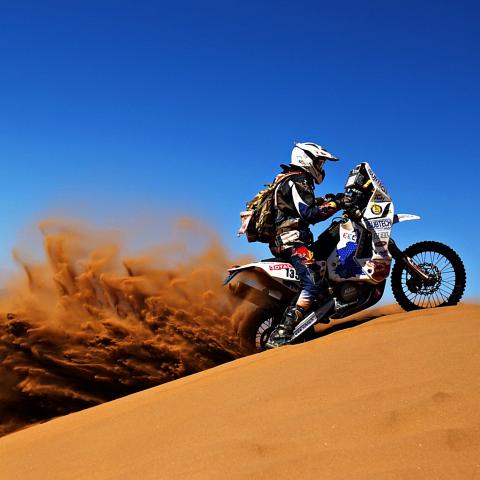Participate in the DAKAR
 HOW THE DAKAR RALLY WORKS
HOW THE DAKAR RALLY WORKSThierry Sabine was lost, hopelessly lost. It was 1977 and the Frenchman had been riding through the Libyan Desert during a motorcycle rally. After going off course, Sabine looked around him. Despite being in the middle of nowhere, the challenges of crossing Libya on a motorcycle, along with the country's stark beauty, captivated Sabine. He decided to create the ultimate racing event that would test the mettle of thrill seekers such as himself.
A year later, on Dec. 26, 1978, Sabine's brainchild, the Dakar Rally, was born. It soon became motorsport's ultimate endurance race. The 6,000-mile (9,656.06-kilometer) multi-stage race began in Paris in the shadow of the Eiffel Tower and ended in Dakar, Senegal. One hundred and seventy competitors started the race that year, which was won by a motorcyclist named Cyril Neveu.
It didn't take long for the race to catch the attention of automakers, sponsors and fans. For the next three decades, the Dakar Rally became the ultimate off-road sport. Many who participate are adventure seekers. Moreover, car manufacturers often use the rally to test new vehicles. Teams participate in four categories: trucks, autos, motorcycles and quads.
The race has had its share of controversy. In 2008, race organizers cancelled the 16-day event after terrorists killed a family of French tourists in Mauritania, a North African country. Eight of the 15 stages of the rally were scheduled to be held in Mauritania. A year later, the race moved to South America.
The race's official Web site claims "entering the Dakar is, in a certain way, like climbing Everest, sailing round the globe or rowing round the world." However, the Vatican newspaper called it "the bloody race of irresponsibility".
TOUGH TERRAIN
The Dakar is not your grandfather's motor sport rally. Nearly 500 racers from more than 50 countries compete each year in the 14-stage race. Billed as the most dangerous race in the world, 59 people have died either participating or watching as spectators. In 2010, a woman in Argentina died after being struck by a vehicle that veered off course. She was one of more than 20 race fans who have been killed over the years [source: CNN]. In 2012, Jorge Martinez Boero, an Argentinean rider, died on the first day of the event after he suffered a heart attack after falling off his bike.
What makes Dakar so dangerous? The rally pits drivers not only against one another, but also against some of the most extreme terrain in the world. While the biggest challenge in Africa was its deserts, South America has many more obstacles. The 8,000-mile (12,875-kilometer) race winds through Argentina, Chile and Peru.
The race is composed of three groups of modified vehicles including motorcycles, quads, cars (which include dune buggies and SUVs) and trucks. Drivers must complete every stage in their class. During each leg, competitors must follow a specific route using a map. Drivers have to find their own way. In the end, everyone is supposed to end up at the same place, but people often get lost.
Competitors must withdraw from the race if their vehicles are damaged beyond repair. They must also withdraw if they are seriously injured.
Source: adventure.howstuffworks.com